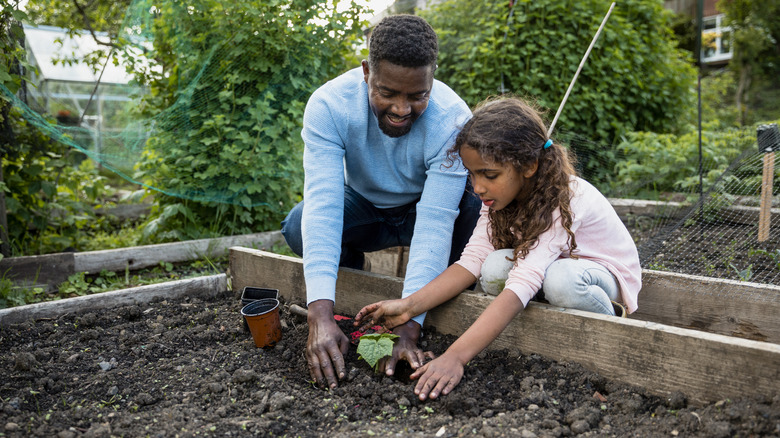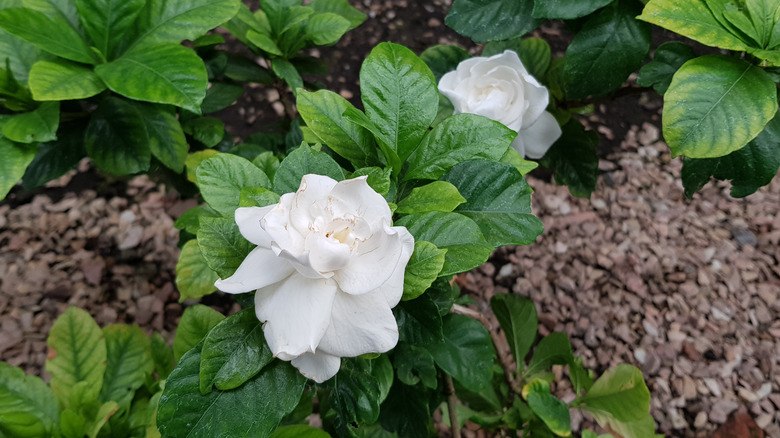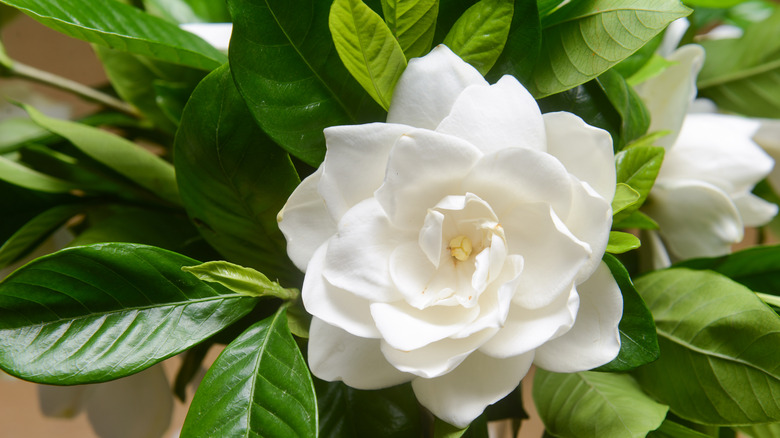The Popular Flower You May Want To Reconsider Adding To Your Garden
There are endless options for perennials we can add to our gardens to accomplish a serene landscape full of buzzing bees, fresh fragrances, and vibrant colors. One flower often considered as a new perennial to grow is gardenias. These shrubs, also called Cape Jasmine, are white and yellow flowers in star and pinwheel-like shapes that have more than 140 varieties, and can vary drastically in size. Some can grow as small as 3 feet and others as large as 8 feet.
While the highly fragranced flower can thrive in containers or directly in one's garden bed, they are found to be a taxing plant to cultivate. Many gardeners move away from gardenias after learning of their sensitive nature, as they don't take well to being transplanted, temperature and humidity changes, and are not very adaptive to different pH levels. But, despite the challenges they pose, you may find that these gorgeous shrubs are worth all the effort and can be successfully grown with the right determination.
Challenges of growing gardenias
The main challenge gardenias pose for gardeners is how unwilling the plant is to adapt to conditions that may not be ideal. Gardenias prefer USDA zones 7 to 11, and if you live in zones higher or lower, you'll likely find it quite difficult to maintain healthy shrubs. They are very particular plants, usually preferring to be in a sweet spot that isn't too hot or too cold, too wet or too dry. Gardenias love to have access to full sunlight but will wither away if they get too hot. They prefer high humidity and can benefit from daily misting, but are susceptible to disease and rot if you are not careful. Additionally, if you have dogs and cats in your home and yard, keep in mind that gardenias are considered toxic to pets. The ASPCA reports that the fragrant flower can cause hives, vomiting, and diarrhea in our furry friends.
Although a difficult and picky plant, gardenias turn our outdoors into an oasis with their stunning florals and rich foliage. If you are determined to cultivate gardenias for yourself, there are a number of things to keep in mind.
Gardenia care and growth
Gardenias are a challenging perennial to grow and take care of because they favor specific environments and aren't flexible regarding which conditions they'll thrive in. Being native to tropical climates, gardenias prefer mild temperatures of 60 to 70 degrees Fahrenheit and high humidity. If living in hotter locations, you should plant your gardenias in a place with bright morning sun that is lightly shaded throughout the afternoon to avoid scorching the plant. In colder areas, the shrubs will do well in areas with full to partial sunlight.
While many perennials have a wide range of pH balances they can adapt to, gardenias are on the picky side and require acidic, aerated soils with pH levels between 5-6. They love to be moist, but the ground needs to be well-draining. Mulching with pine straw or shredded bark is a great way to retain moisture and prevent overwatering. If planting gardenias for the first time, try planting about a month before expecting winter's first frost and choose a permanent location. They don't take well to being moved once planted, and you want them to have plenty of time to settle before the full force of cold weather is at your doorstep. Slow-release fertilizers emphasizing acidic soils can be applied one to two times a month during the blooming season to encourage growth. Lastly, pruning will help your gardenias stay fresh and hearty, but be sure not to prune until after fully blooming, or you risk removing healthy buds.


